Affiliate disclosure: This post may contain affiliate links. Please see our Privacy Policy.
Linden tea is one of my favorite summertime drinks to enjoy on a relaxing afternoon in the sun. With its exotic, orchid-like fragrance and mildly sweet floral flavor, it’s a wonderfully calming tea that’s perfect on its own or with a bit of raw honey. It also boasts some impressive medicinal benefits!
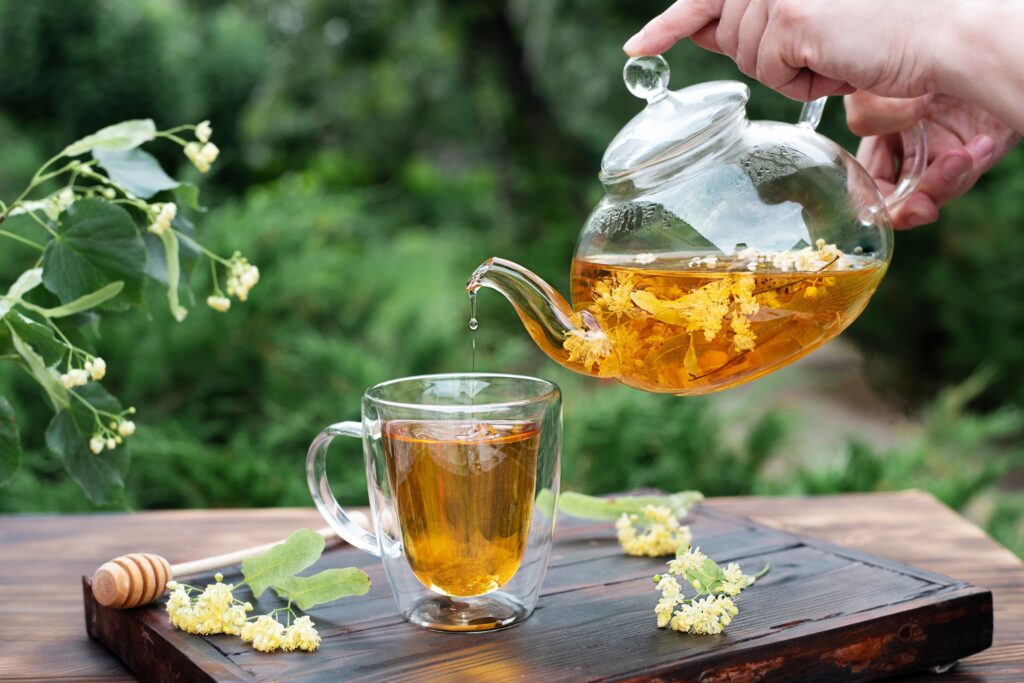
If you’re lucky enough to be in the Northeast during early summer, you can easily harvest your own linden blossoms, especially if you know how to identify linden trees. They’re fragrant enough that you can probably follow your nose to find them in season.
But don’t worry if you can’t forage it yourself—dried linden flowers are available online, either in bulk or as pre-made tea bags, and you can easily brew a soothing cup no matter where you live.
Beyond the lovely flavor, linden tea has several impressive medicinal benefits that make it a perfect addition to your wellness routine.
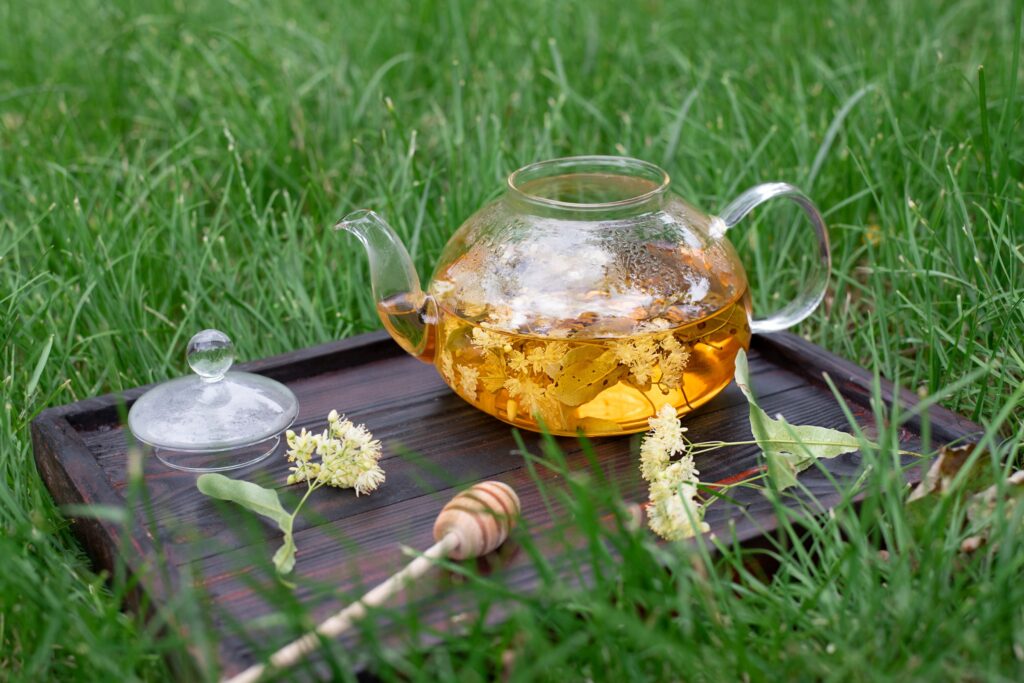
What is Linden Tea?
Linden tea is made from the blossoms of the linden tree, which is part of the Tilia species. These trees are widely found in Europe and North America.
The flowers of the tree are harvested and dried, and the resulting tea is not only fragrant but packed with medicinal properties.
How to Make Linden Tea
Making linden tea is easy, whether you’re using freshly harvested flowers or dried linden. Simply add 1-2 teaspoons of dried linden flowers (or a few fresh blossoms) to a cup, pour in boiling water, and let it steep for 5-10 minutes. Strain the tea and enjoy. If you like, you can sweeten it with honey or drink it plain for a simple and soothing experience.
You can also buy pre-made linden tea bags that are ready to go as is.
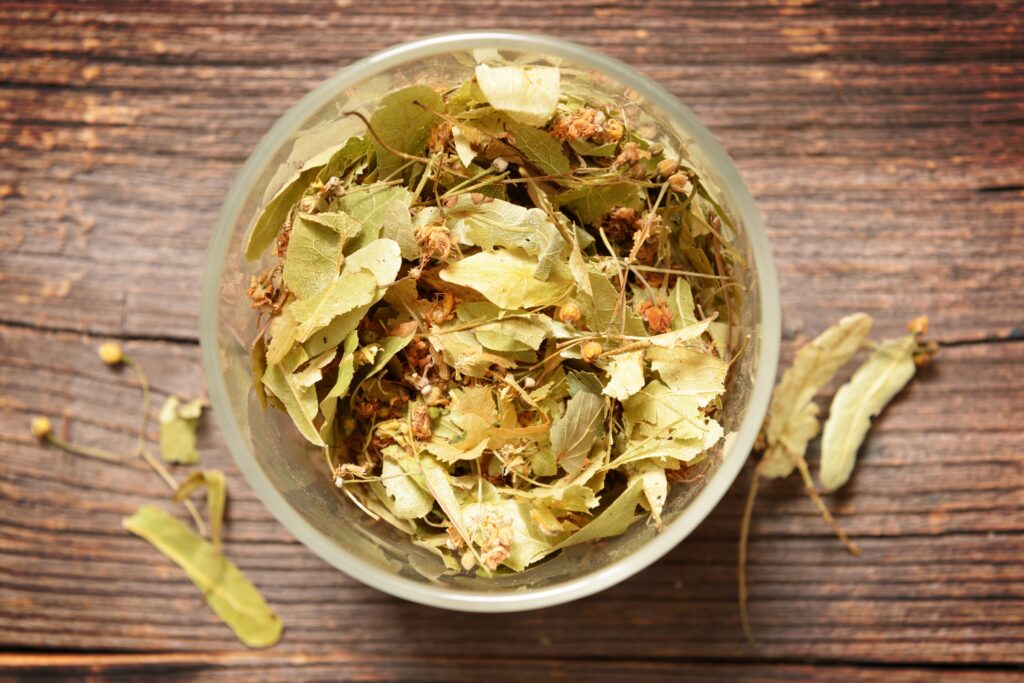
Medicinal Benefits of Linden Tea
Linden tea is more than just a relaxing beverage—it has several medicinal benefits, particularly for stress, tension, and respiratory ailments.
It’s well known for treating:
- Stress, Anxiety and Insomnia
- Fever and Respiratory Illnesses
- Grief and Sadness
You can make specific linden tea blends, depending on your goals, or enjoy linden tea alone as is. These blends listed below are common formulations with linden and other calming medicinal herbs.
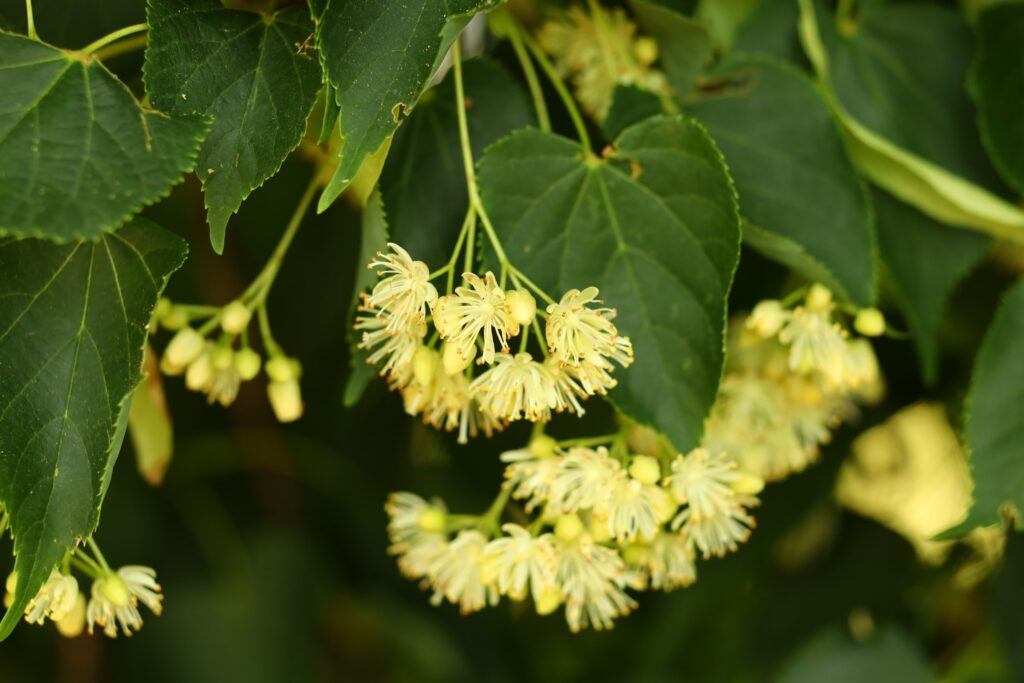
Linden for Stress, Anxiety, and Insomnia
Linden tea is known for its calming properties. It’s a nervine herb, which means it soothes frayed nerves and aids in relaxation. It also helps with muscle spasms, making it useful for easing tension-related pain, like migraines and menstrual cramps.
For improved circulation and lowered blood pressure, linden works wonderfully when combined with hawthorn. Together, they create a powerful blend that can help ease stress and promote better sleep.
Relaxing Linden Tea Blend Recipe:
- 2 parts linden blossoms
- 1 part lemon balm leaves
- 1 part hawthorn berries
Mix the ingredients in a jar. When ready to use, combine 2-3 tablespoons of the blend with 1 cup of boiling water. Strain, and enjoy plain or with a little honey for added sweetness.
Linden for Fever and Respiratory Illness
Linden’s cooling properties make it an excellent herb for helping to reduce fever and promote restful sleep when you’re feeling sick. Its mucilage component helps soothe respiratory pathways, making it an excellent choice for easing coughs and colds.
Linden also mixes well with other herbs like elderflower, lemon balm, and marshmallow root for even greater relief from respiratory discomfort.
Linden Tea for Respiratory Illness Recipe:
- 1 part linden flowers
- 1 part elderflowers
- 1 part lemon balm leaves
- 1 part marshmallow root
Mix the ingredients in a jar. When you’re ready to brew, combine 2-3 tablespoons of the blend with 1 cup of boiling water. Strain, and sip on this soothing tea when you’re feeling under the weather.
Linden for Grief and Sadness
Linden trees are believed to bring happiness and joy, and in folklore, the blossoms were said to have emotional healing powers. It’s said that during World War II, Hitler ordered the destruction of linden trees in Germany, hoping to quell their symbolic power, only for the people to protest so fiercely that the trees were replanted.
Linden has long been used in traditional remedies to ease sadness and grief, helping people through emotionally difficult times. This particular recipe is adapted from The Gift of Healing Herbs by Robin Rose Bennett and Rosemary Gladstar.
Linden Infusion for Grief and Sadness:
- 2 parts linden blossoms
- 2 parts violet leaves
- 1 part hawthorn berries
- ½ gallon of boiling water
Rosemary Gladstar recommends making this tea blend in large batches and sipping throughout the day for emotional support.
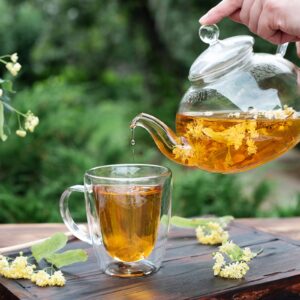
Linden Tea
Ingredients
- 1 Tbsp dried linden flowers, or about 1/4 cup fresh linden blossoms
- 1 cup boiling water
- honey, optional, to taste
Instructions
- Place the linden flowers in a cup.
- Pour in boiling water.
- Let it steep for 5-10 minutes.
- Strain the tea and enjoy! Sweeten with honey, if desired.
Notes
Relaxing Linden Tea Blend
- 2 parts linden blossoms
- 1 part lemon balm leaves
- 1 part hawthorn berries
Linden Tea for Respiratory Illness
- 1 part linden flowers
- 1 part elderflowers
- 1 part lemon balm leaves
- 1 part marshmallow root
Linden Infusion for Grief and Sadness
- 2 parts linden blossoms
- 2 parts violet leaves
- 1 part hawthorn berries
Nutrition
Nutrition information is automatically calculated, so should only be used as an approximation.
With its delightful flavor and numerous health benefits, linden tea is truly a perfect addition to your herbal tea collection. Give it a try and feel the calming effects for yourself!
For more information on linden’s medicinal properties, I recommend checking out these references:
- Body into Balance: An Herbal Guide to Holistic Self Care by Maria Groves
- The Earthwise Herbal: A Complete Guide to Old World Medicinal Plants by Matthew Wood
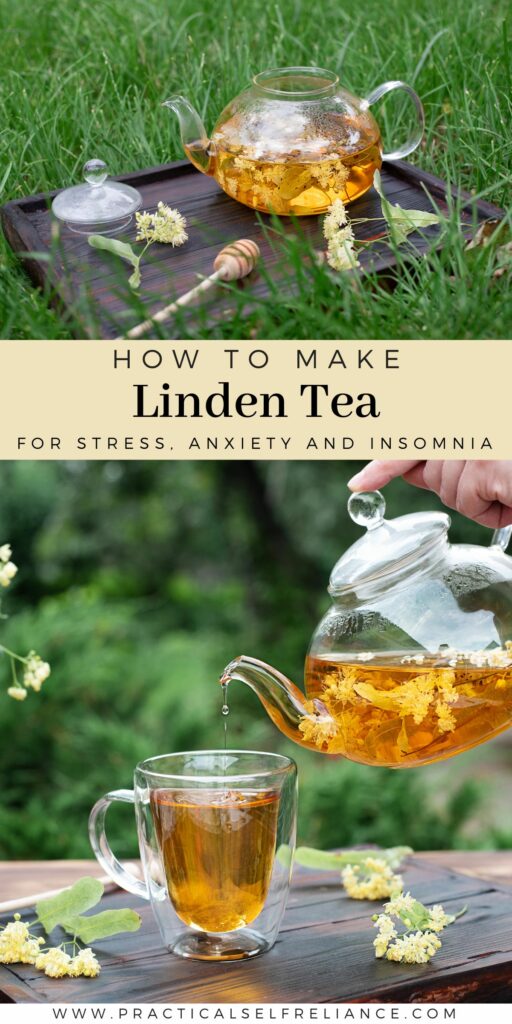
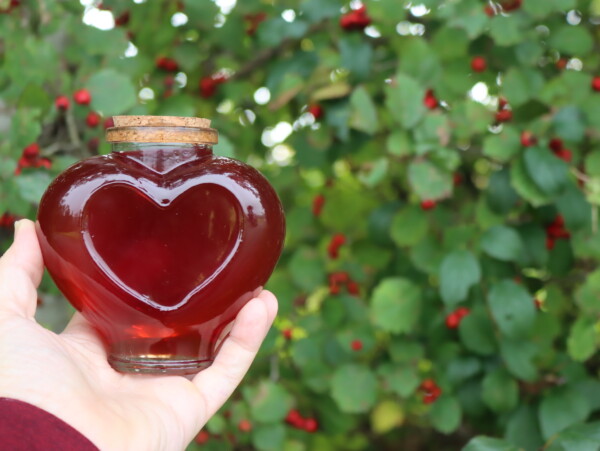
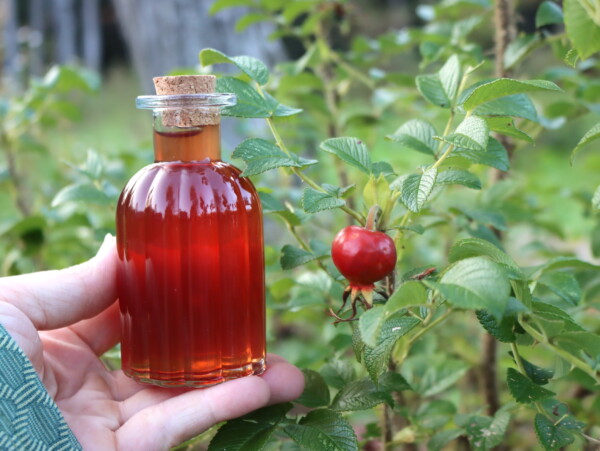
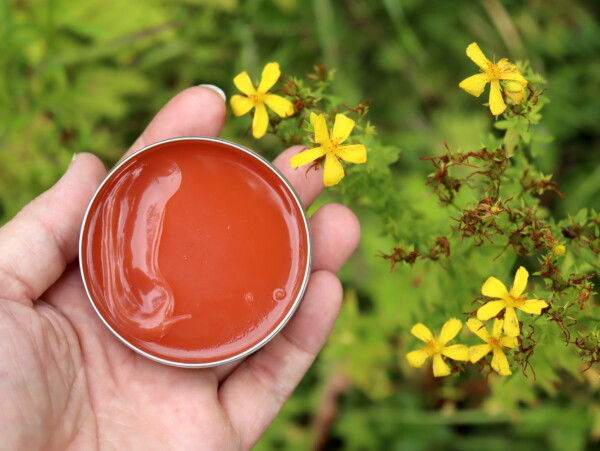
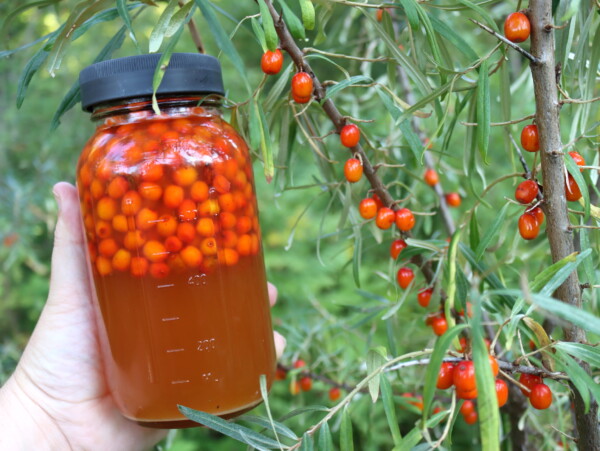
Never heard of this one.
Your links do not work
Is there a specific link that you’re having trouble with or are you having trouble with all of the links?
Very interesting Wil give it a try. Thank you.
You’re welcome. Hope you enjoy it!